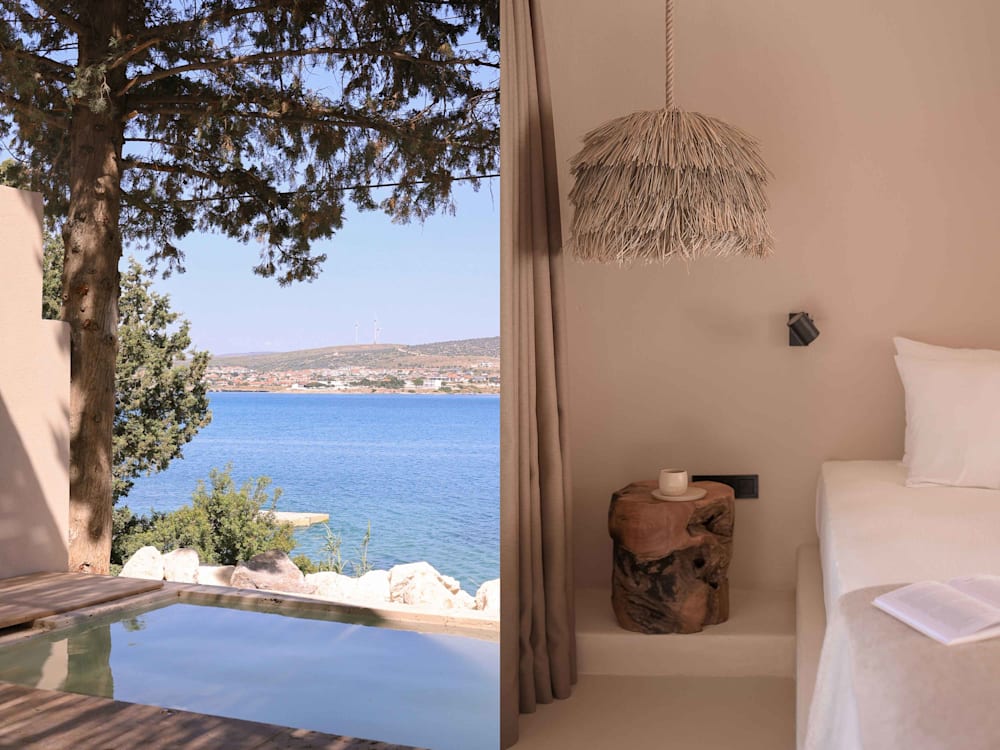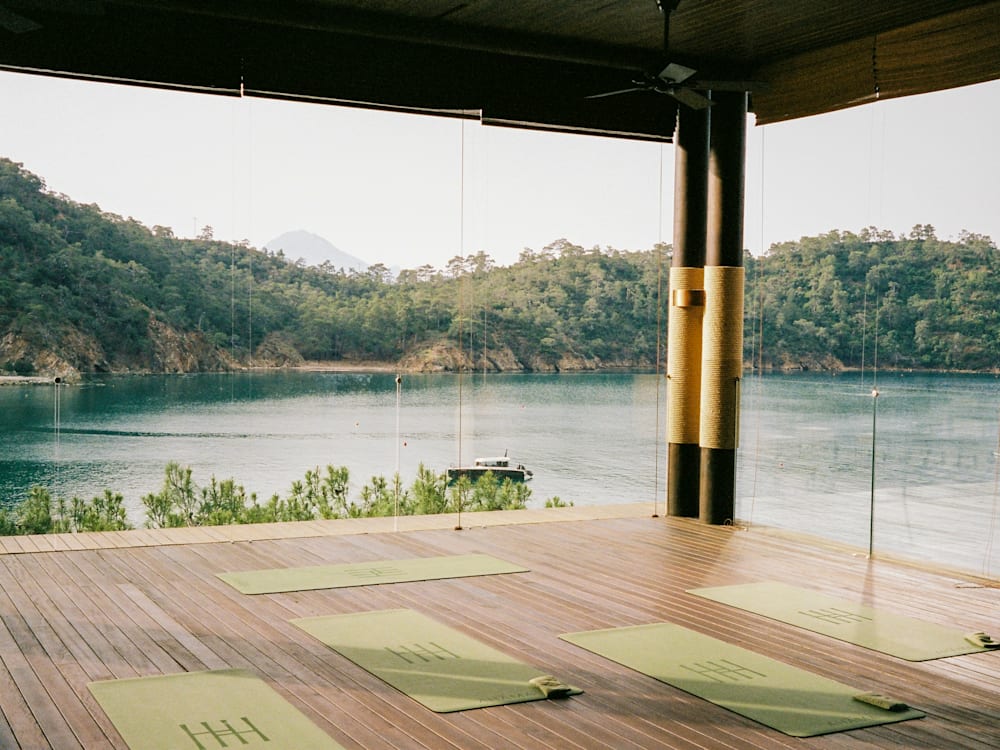Athens, Rome, Istanbul: the great cradles of culture are known to all. But there’s an undersung hero that deserves a place among their ranks: the Turkish Riviera, covering almost 1,000 kilometres of coastline from İzmir to Antalya. Empires have risen and foundered on this coast, leaving behind a treasure trove of ancient ruins, tales and myths. Even better, cultural deep-dives can be paired with serious beach time, with countless seaside villages, turquoise bays and sandy shores to explore. Here are the best destinations on the Turkish Riviera and our pick of hotels to stay in.
İzmir and the Çeşme Peninsula

Gaia by the Sea
Classical clout Wrapped around the head of a gulf on the Anatolian coast, İzmir was a bastion of Mediterranean power for millennia. The city’s strategic position made it a prize for a succession of empires, passing from Greek to Roman, Byzantine to Ottoman. But for all its history, it flies under the radar for many tourists — perhaps because its old Greek name, Smyrna, is the one you’ll find in tales, novels and historical records written before the 1930s.
Contemporary charm İzmir’s modest reputation is a blessing in disguise. The city receives far less footfall than, say, Istanbul, meaning locals still have the upper hand. Proudly liberal and cosmopolitan, it’s an excellent place to stroll around, dotted with ancient landmarks, labyrinthine bazaars and palm-lined, waterfront promenades, where locals gather over plates of midye dolma (mussels stuffed with spiced rice and herbs). To the west of the city is the Çeşme Peninsula, home to a smattering of picturesque seaside towns known for their stylish restaurants, wineries and beach clubs.
Where to stay Warehouse by The Stay occupies a former brewery on the peninsula, just outside the town of Alaçatı. This away-from-the-fray location allows plenty of space for its cavernous lounge area, industrial-styled rooms and spacious gardens, where there’s a heated pool, day-beds and fire pits. If a waterfront location is non-negotiable, go with Gaia by the Sea, a beachy, bohemian stay with a private wharf secluded behind banks of rushes.
Bodrum
Classical clout In antiquity, Bodrum was known as Halicarnassus, an ancient city overlooked by the Mausoleum of Halicarnassus, one of the seven wonders of the ancient world. It was captured from the Persian Empire by Alexander the Great and was the birthplace of Herodotus, the ‘Father of History’. But its heroic age didn’t last. The city never really recovered from Alexander’s siege, dwindling to little more than a fishing village. For centuries, sponge divers plied their trade there and had very little contact with the outside world.
Contemporary charm In the Twenties, a Cretan-Turkish writer named Cevat Şakir Kabaağaçlı was exiled from Istanbul to Bodrum (a punishment we could really get behind). While there he wrote about the free-spirited lives of the fishermen and the beauty of the coastline, causing a sensation among the Turkish intelligentsia. Bodrum soon became the darling of the upper classes, who cruised around on gulet schooners, coming ashore to visit ruins, harbors and secluded coves. A practice dubbed the ‘Blue Voyage’, it’s just as popular today and Bodrum remains the most glamorous corner of the riviera, with a burgeoning collection of star-chef-led restaurants, high-end beach clubs and a thriving yachting scene.
Where to stay The Temple of Artemis might now be gone from this stretch of Turkish coast (aside from some scattered fragments), but Six Senses Kaplankaya has created a new divine order: one of serenity, rest and relaxation. The grounds are filled with olive groves, cypress trees and oleander, running down to a secluded bay with golden sand and turquoise water. Oku Bodrum is the new kid on the block, laying claim to a waterfront spot on the peninsula’s north shore. Like its sister stays in Ibiza and Kos, it has a minimalist and bohemian lean, with wood, wicker, hessian and slate-toned fabrics in the sea-facing rooms.
Fethiye

Ahama
Classical clout Close to the southernmost point of the Turkish coast, Fethiye is a port city sheltered by mountains swathed in pine and cedar forest. In antiquity it was known as Telmessos, the largest city in the kingdom of Lycia. Not one to miss a moment for glory, Alexander the Great was here too — legend has it he sent his soldiers into the city disguised as musicians and slaves, conquering Telmessos from the inside out. Surviving monuments include stone sarcophagi, a Roman theatre and the Tomb of Amyntas, a monumental Lycian tomb carved into the rock face of the mountain.
Contemporary charm Fethiye is a compact city, but there’s plenty to sink your teeth into. The city’s colourful bazaar is open on Tuesdays and Fridays, with stalls piled high with spices, coffee, local cheeses, olives and sweet treats like baklava, almond biscuits and pistachio-flavoured Turkish delight. The Muğla Fethiye museum showcases artifacts from 3,000 BC to the Ottoman period, including objects unique to the Lycian region. Abandoned in the late Ottoman era, nearby ghost town Kayaköy has been preserved as a ‘museum village’, best visited in the morning or around sunset. You can also take day trips to the Greek island of Rhodes, catching the ferry from the port (the journey takes an hour and a half).
Where to stay Ahama hotel is along the coast from the city, spread across the beachfront of a secluded bay, sheltered by coastal hills at either end and backed by a forest of rare liquidambar trees. It has a meditative, minimalist character, with rooms and cabanas of jute, wood and stone tucked between the trees. There’s a strong focus on holistic wellness, with sunrise yoga classes held on a window-walled viewing platform on the hillside, shamanic rituals, sound healing, breathwork and qi gong classes among the offerings.
Antalya
Classical clout At the eastern end of the Turkish Riviera, Antalya was founded by Pergamon Greeks some time around 150 BC, but spent much of its ancient era in Roman hands. The city’s Roman harbour dates back to the time of Hadrian, whose visit to the city was celebrated with the construction of Hadrian’s Gate, still standing today. There are Biblical connections, too: according to the New Testament, the apostles Barnabas and Paul of Tarsus visited the city at some point in the first century. You’re also well-placed to visit Turkey’s best-preserved ancient city, Termessos, built on the slopes of Solymos Mountain, around 40 minutes’ drive away.
Contemporary charm For all its ancient history, Antalya is better known for Kaleiçi, its beautifully-preserved Ottoman old town. Spend an afternoon wandering the narrow, cobbled streets, lined with centuries-old houses, mosques and boutiques selling Turkish carpets, leather goods, soaps and jewellery. Its charm only increases at sundown, when locals congregate in its traditional restaurants, cafés and taverns, where you’ll often find live music. You can reach otherwise inaccessible beaches in the area by boat — preferably on a traditional gulet, which can be chartered by the day. You’ll find many of the handsome vessels moored in the harbour, overlooked by some of the city’s best restaurants and bars.
Where to stay Bijal hotel is an hour’s drive from Antalya, but you won’t begrudge the journey once you reach it. A project of Turkish entrepreneur Esin Güral Argat — who put herself on the map with Joali in the Maldives — this coastal resort lays claim to a prime stretch of maquis shrubland on the Side peninsula. Its vast, neo-deco suites overlook juicy lawns and lush gardens, the pristine beach is backed by some of the nicest cabanas we’ve ever laid eyes on, and the two restaurants sport menus by Michelin-starred chef Theodor Falser.
Ready for your own Turkish delight? Explore our full collection of Turkey hotels



